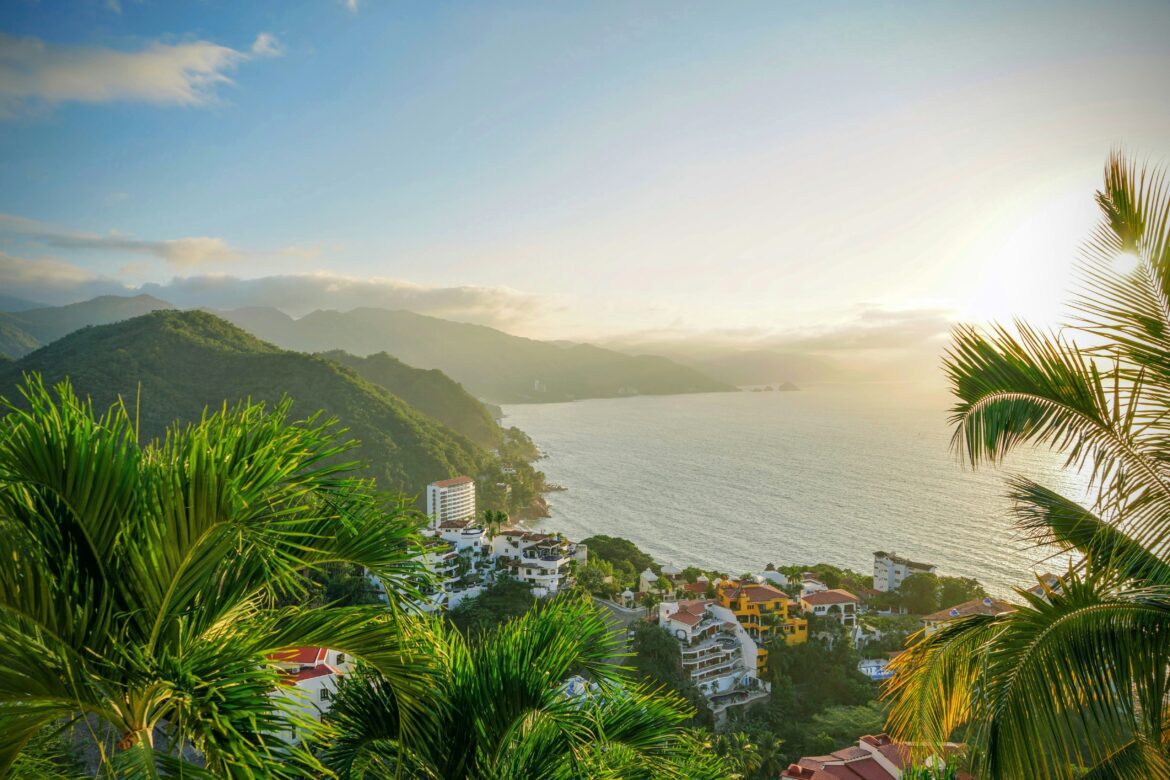The Mexican Riviera, stretching along the country’s Pacific coastline, is a dream destination for travelers seeking sunshine, warm seas, and culture. With its golden beaches, lush jungles, and charming colonial towns, this region offers a perfect blend of relaxation and adventure. Whether you’re looking for vibrant nightlife, world-class cuisine, or outdoor exploration, the Mexican Riviera has it all. Here’s a guide to the most beautiful towns on this stunning coastline and what you can do in each one.
1. Puerto Vallarta
Puerto Vallarta is one of Mexico’s most beloved coastal destinations, known for its scenic bay, cobblestone streets, and lively arts scene. A stroll along the Malecón, the town’s beachfront promenade, offers ocean views, street performers, and sculptures that add to its artistic charm.
The Zona Romántica is a must-visit, with its boutique shops and cafés. For adventure seekers, a boat tour to the Marietas Islands reveals a famous hidden beach and diverse marine life.
Puerto Vallarta’s nightlife is also well known, with beachfront bars and lively clubs catering to all tastes. Scuba diving in Banderas Bay is also a highlight, with underwater canyons and abundant marine life including dolphins, sea turtles, rays, and an array of vibrant fish species. Visit from December to March for the chance to spot humpback whales.
2. Sayulita
Sayulita is a laid-back beach town known for its surf culture and artistic vibe. The town’s colorful streets are lined with artisan markets, cafés, and lively bars, making it a hub for backpackers and bohemian travelers. Surfing is the main attraction here, with waves suitable for both beginners and experienced surfers.
A short hike to Playa de los Muertos, a secluded beach beyond the town’s scenic cemetery, offers a quieter spot for relaxing. Many visitors join yoga retreats or wellness workshops in Sayulita. For a true taste of the coast, fresh coconut water and fish tacos are best enjoyed at one of the many beachfront palapas.
3. San Pancho
Just north of Sayulita, San Pancho is a hidden gem that offers a more tranquil alternative to other towns on the Mexican Riviera. The beach here is uncrowded, perfect for long walks and breathtaking sunsets. The town is home to EntreAmigos Community Center, a non-profit supporting arts and education, where visitors can learn about local initiatives.
Jungle trails around San Pancho provide opportunities to spot iguanas, tropical birds, and other wildlife. The town’s restaurants are known for their gourmet farm-to-table dining experiences, making it a great place to indulge in fresh, local cuisine. San Pancho’s central plaza often hosts live music and cultural events, giving visitors an authentic taste of the local community spirit.
4. Mazatlán
Mazatlán blends history and modernity, offering golden beaches alongside a well-preserved historic district. Centro Histórico is a lively area filled with vibrant colonial-era architecture, charming plazas, and bustling cafés.
For panoramic scenery, take a hike up to the Faro de Mazatlán, one of the tallest natural lighthouses in the world – it is well worth the effort. Afterward, reward yourself with Mazatlán’s famous Pescado Zarandeado, a traditional Mexican grilled fish dish originating from the Pacific coastal regions. And for culture, don’t miss the beautifully restored Angela Peralta Theater, which hosts performances ranging from opera to ballet, adding a touch of elegance to any visit.
5. Zihuatanejo
Once a sleepy fishing village, Zihuatanejo retains its old-world charm despite its growing popularity. Playa La Ropa is the town’s most famous beach, perfect for swimming and sunbathing, while Playa Las Gatas offers crystal-clear waters ideal for snorkeling.
A morning visit to the beach fish market provides an authentic glimpse into the town’s fishing heritage. Nearby, Isla Ixtapa is an unspoiled small island where visitors can kayak, snorkel, and relax on secluded beaches. Dining in Zihuatanejo is also a highlight, with cliffside restaurants offering spectacular ocean views and delicious food.
6. Barra de Navidad
For those looking to escape the crowds, Barra de Navidad is an idyllic small town with stunning natural beauty and a relaxed atmosphere. A boat ride through the mangrove estuaries reveals a variety of exotic birds and lush greenery. The calm waters of Laguna de Navidad provide a peaceful setting for watching sailboats pass by.
The town’s central square is a charming place to enjoy local life, with friendly cafés and street vendors selling handmade crafts. A visit to Barra de Navidad isn’t complete without trying a coco loco, a refreshing coconut drink best enjoyed while watching the sunset. A short trip to Melaque, a neighboring village, offers another fantastic beach with local markets worth exploring.
When Is The Best Time to Visit the Mexican Riviera?
The best time to visit the Mexican Riviera is between December and April, when the weather is warm, dry, and sunny. This period offers ideal conditions for beach activities, snorkeling, and exploring the towns without the heavy humidity of summer. If you want to avoid peak season crowds, consider visiting in early December or late April when the weather is still excellent but there are fewer tourists.
How to Get There and Local Travel Tips
Flights to the Mexican Riviera are available through major airports in Puerto Vallarta (PVR), Mazatlán (MZT), and Zihuatanejo (ZIH), with international connections from North America and beyond. Once there, local transport options include buses and rental cars, with the latter offering the most flexibility for exploring multiple destinations.
The local currency is the Mexican Peso (MXN), though USD is widely accepted in tourist areas. While the region is generally safe for travelers, it’s always best to check the current travel advice and take standard precautions, such as avoiding isolated areas at night and using official taxis or rideshare services.
Wherever you travel in the Mexican Riviera, be sure to pack light, breathable clothing, bug spray for areas near jungles and mangroves, and reef-safe sunscreen such as Raw Elements, Stream 2 Sea, or Badger to help protect marine life.
This article was written by Kathryn Curzon, a shark conservationist and dive travel writer for SSI.

Leave a Reply